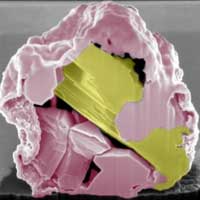 Inspired by nature's work to build spiky structures in caves, engineers have developed technology capable of recovering pure and precious metals from the alloys in our old phones and other electrical waste.
Inspired by nature's work to build spiky structures in caves, engineers have developed technology capable of recovering pure and precious metals from the alloys in our old phones and other electrical waste.
Mar 1st, 2021
Read more
 Just like cellulose, lignin and fats, proteins are renewable raw materials. Their potential for the chemical industry remains largely untapped.
Just like cellulose, lignin and fats, proteins are renewable raw materials. Their potential for the chemical industry remains largely untapped.
Mar 1st, 2021
Read more
 The goal of a new joint initiative called SynFuels is to develop a process for producing kerosene from renewable resources. In this way liquid fuel mixtures of the highest quality, which would allow the most residue-free combustion possible and thus be suitable for aircraft propulsion, should be obtainable using carbon dioxide and hydrogen from renewable resources.
The goal of a new joint initiative called SynFuels is to develop a process for producing kerosene from renewable resources. In this way liquid fuel mixtures of the highest quality, which would allow the most residue-free combustion possible and thus be suitable for aircraft propulsion, should be obtainable using carbon dioxide and hydrogen from renewable resources.
Feb 25th, 2021
Read more
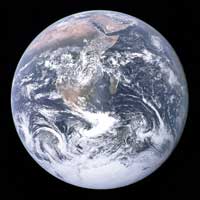 Science and policy need to incorporate diversity and complexity of the world when thinking about a sustainable future.
Science and policy need to incorporate diversity and complexity of the world when thinking about a sustainable future.
Feb 22nd, 2021
Read more
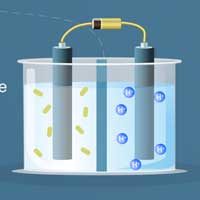 Researchers have developed a bioelectrosynthetic process in which electroactive bacteria convert CO/CO2 into useful metabolites like acetate and volatile fatty acids using electricity as the reducing power.
Researchers have developed a bioelectrosynthetic process in which electroactive bacteria convert CO/CO2 into useful metabolites like acetate and volatile fatty acids using electricity as the reducing power.
Feb 18th, 2021
Read more
 Chemists have developed a method for more sustainable recycling of polyethylene-like plastics.
Chemists have developed a method for more sustainable recycling of polyethylene-like plastics.
Feb 17th, 2021
Read more
 Given the scale of the industry and its greenhouse gas emissions, technologies that can reinvent concrete could have profound impacts on climate change.
Given the scale of the industry and its greenhouse gas emissions, technologies that can reinvent concrete could have profound impacts on climate change.
Feb 15th, 2021
Read more
 In recent years, materials scientists have been experimenting with making wood transparent. Making wood see-through, and retaining its high mechanical properties, would provide a good alternative to glass from a sustainable and renewable source.
In recent years, materials scientists have been experimenting with making wood transparent. Making wood see-through, and retaining its high mechanical properties, would provide a good alternative to glass from a sustainable and renewable source.
Feb 12th, 2021
Read more
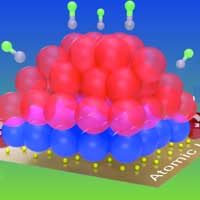 Identifying specific platinum atoms activated in a water gas shift reaction catalyst could guide the design of less costly efficient catalysts.
Identifying specific platinum atoms activated in a water gas shift reaction catalyst could guide the design of less costly efficient catalysts.
Feb 10th, 2021
Read more
 Scientists investigate the factors affecting the global land use impacts and CO2 emissions of plant-based plastics.
Scientists investigate the factors affecting the global land use impacts and CO2 emissions of plant-based plastics.
Feb 5th, 2021
Read more
 There are various ways to store excess carbon dioxide. One way is to have it hidden in buildings. A new type of zero emission buildings achieves this by using wood for almost everything - from beams to pillars and staircases. Concrete is to be found only in the foundations and the ground floor.
There are various ways to store excess carbon dioxide. One way is to have it hidden in buildings. A new type of zero emission buildings achieves this by using wood for almost everything - from beams to pillars and staircases. Concrete is to be found only in the foundations and the ground floor.
Feb 2nd, 2021
Read more
 Researchers use electrolysis to produce dichloro and dibromo compounds in a safer and more environmentally friendly manner.
Researchers use electrolysis to produce dichloro and dibromo compounds in a safer and more environmentally friendly manner.
Jan 29th, 2021
Read more
 Seawater is abundant and cheap, making it a tempting resource to meet the world's growing need for clean drinking water and carbon-free energy. Now researchers have reported a new catalyst that can be made quickly and inexpensively, bringing the technology closer to commercial reality.
Seawater is abundant and cheap, making it a tempting resource to meet the world's growing need for clean drinking water and carbon-free energy. Now researchers have reported a new catalyst that can be made quickly and inexpensively, bringing the technology closer to commercial reality.
Jan 28th, 2021
Read more
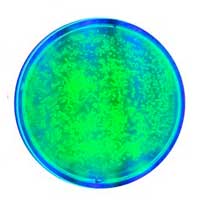 Scientists have discovered fermented food waste can boost bacteria that increase crop growth, making plants more resistant to pathogens and reducing carbon emissions from farming.
Scientists have discovered fermented food waste can boost bacteria that increase crop growth, making plants more resistant to pathogens and reducing carbon emissions from farming.
Jan 28th, 2021
Read more
 Recycled concrete aggregates made with everything from coffee cups to building rubble offer huge environmental benefits, from reducing landfill and CO2 emissions, to saving natural resources and boosting the circular economy.
Recycled concrete aggregates made with everything from coffee cups to building rubble offer huge environmental benefits, from reducing landfill and CO2 emissions, to saving natural resources and boosting the circular economy.
Jan 28th, 2021
Read more
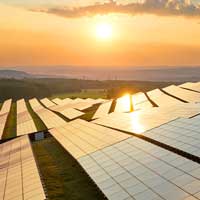 Researchers using artificial intelligence and machine learning to improve photovoltaic power plants.
Researchers using artificial intelligence and machine learning to improve photovoltaic power plants.
Jan 26th, 2021
Read more
 New design could speed reaction rates in electrochemical systems for pulling carbon out of power plant emissions.
New design could speed reaction rates in electrochemical systems for pulling carbon out of power plant emissions.
Jan 25th, 2021
Read more
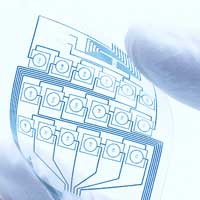 Researchers will use materials science and printed electronics to deal with the ever-increasing problem of electronic waste.
Researchers will use materials science and printed electronics to deal with the ever-increasing problem of electronic waste.
Jan 25th, 2021
Read more
 Inspired by nature's work to build spiky structures in caves, engineers have developed technology capable of recovering pure and precious metals from the alloys in our old phones and other electrical waste.
Inspired by nature's work to build spiky structures in caves, engineers have developed technology capable of recovering pure and precious metals from the alloys in our old phones and other electrical waste.
 Subscribe to our Cleantech News feed
Subscribe to our Cleantech News feed















